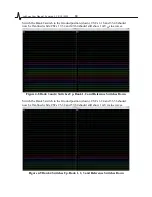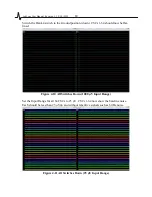
LabLynx User Manual Revision 1.1 2/18/2021
32
Configuring TTLs
LabLynx can output TTL signals and read TTL inputs. TTL input/output data is recorded
along with the neural data at a sample rate of 30 kHz. This TTL functionality is designed
to provide basic experiment control functionality with the lowest latency possible.
The LabLynx has up to 8 TTL-compatible IO pins which can be configured to receive
input of operant chamber triggering devices such as food dispensers, beam breaks, etc. IO
pins can also be configured as outputs; however, outputs controlled from PC software
will have a latency due to the network communication delay.
LabLynx Commands
Commands can be sent to the LabLynx through Cheetah or NetCom to configure and
query the device. Commands can be sent by opening .cfg files containing commands or
by using the Neuralynx Netcom API.
Each command includes example text for executing the command within a .cfg file.
Notes
•
Cheetah does not currently provide a way to display the return results of any
commands except those already available in the Cheetah GUI.
•
Each command starts with 4-byte header
o
Byte 1 – packet ID, always equal to x01
o
Bytes 2-3 – command size in bytes, equal to the number of bytes in the
command that follow the command size
o
Byte 4 – command ID, different for each command
•
The values within quotes use hexadecimal notation. Two hexadecimal characters
make one byte.
•
Each command example includes a commented-out line labeled “list of command
values.” This is a space delimited list of the command’s header values and
parameters. This list is shown to make it easier to compose the complete string of
command bytes.







































